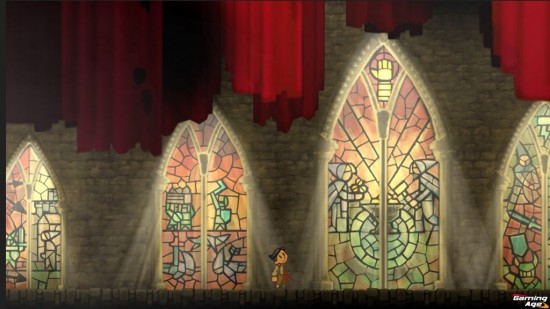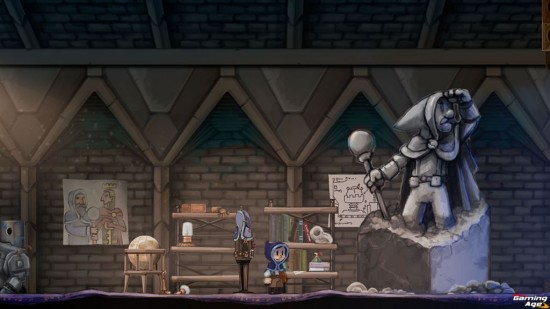Publisher: Rain Games
Developer: Rain Games
Medium: Digital
Players: 1
Online: No
ESRB: T
It’s not very hard to classify Teslagrad. As a 2D puzzle-platformer, it slots in neatly amongst the likes of Braid, Limbo, Thomas Was Alone, Fez, Stealth Inc. (or Stealth Bastard, depending on where you played it). We’ve had no shortage of them over the last few years, to the point that it’s practically become rote: take some almost-but-not-quite retro graphics, add in some kind of mechanic as a hook, throw in a story, and voila: you’ve got yourself an indie hit.
That last paragraph may have been lacking in enthusiasm, but don’t let that put you off Teslagrad: the only reason I’m not raving about it is because I don’t feel like I have an adequate vocabulary to do it justice. Indeed, if there’s one thing any of those games I mentioned in the last paragraph have in common, it’s that they’ve all taken a fairly standard formula and put a unique twist on makes them feel fresh and new.
In Teslagrad’s case, the twist is twofold. The first is obvious: this is a game all about controlling electrical currents. Much like the inventor from which the game borrows its name, the goal in Teslagrad is figuring out how to manipulate electricity to your advantage. Charging yourself and the world around you, you slowly work out how to get to difficult-to-reach ledges and platforms. Occasionally it’s fairly straightforward and simple, but more often than not, you’ll have to do a little trial and error in order to achieve your desired result.
Admittedly, some of this trial and error is because the game’s controls can feel like they’re working against you. Most notably, your character can’t run; he can only propel himself forward using teleportation. While this is certainly useful in getting through some walls and grates, it’s not a perfect mechanic. It’s incredibly frustrating to have to rush through a section, only to discover that you can’t chain together teleportation dashes that are sufficiently fast enough. Of course, if it were easier then there might be an issue with the whole “puzzle” half of the puzzle-platformer equation, so as annoying as it may be, it’s at least understandable.
The game’s other twist isn’t so much a twist as it is…a storytelling choice, I guess. Teslagrad is entirely dialogue-free, preferring instead to tell its story through short, wordless vignettes and other text-free images. There’s definitely an onus on the reader to figure things out, which is somewhat at odds with how most game storytelling goes nowadays, but more often than not, this faith is justified. In this respect, Teslagrad is helped by the fact it knows how to tell a story: it grabs your attention right off the bat by placing a child in peril at the hands of vaguely Russian-looking thugs, and it keeps you enthralled by constantly doling out just enough story to keep you engaged.
On the storytelling front, don’t underestimate the power of gorgeous visuals in keeping you hooked. Even when there’s no plot to be found and you’re just climbing and jumping and teleporting around, the game keeps you in its world simply by dint of having a distinctive visual identity. Essentially, think of a slightly more Slavic take on how Braid looks, and you’re most of the way there.
Even with that similarity, though, Teslagrad still has a look and a feel all its own — which, as I said up top, is what helps set it apart from all those other great puzzle-platformers. At the same time, though, as much as that sets it apart from the likes of Braid, Fez and more, it also places Teslagrad alongside them, as one of the really phenomenal examples of the genre.




